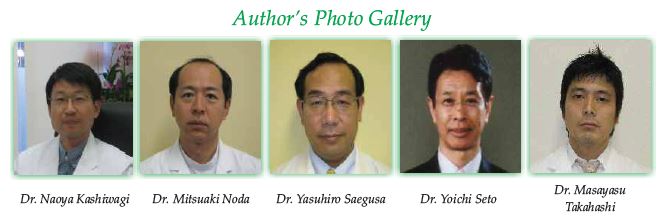[box type=”bio”] What to Learn from this Article?[/box]
1. What are the issues faced while planning and executing quadricepsplasty in cases of femoral fracture treated with external fixator?
2.How to predict and prevent refractures in these cases?
Case Series: Volume 3 | Issue 1 | JOCR Jan – March 2013 | Page 3-6
Authors: Mitsuaki Noda [1], Yasuhiro Saegusa [1], Masayasu Takahashi [1], Naoya Kashiwagi [2], Yoichi Seto [2]
[1] Department of Orthopedics, Konan Hospital 658-0064 Kamokogahara 1-5-16, Higashinada-ku, Kobe, Japan
[2] Department of Orthopedic surgery, SKY Orthopedic clinic 567-0829 Futaba-tyo 10-1, Ibaraki-shi, Osaka, Japan
Address of Correspondence:
Dr Mitsuaki Noda. Department of Orthopedics, Konan Hospital 658-0064 Kamokogahara 1-5-16, Higashinada-ku, Kobe, Japan Email: m-noda@muf.biglobe.ne.jp
Abstract
Introduction: In performing quadricepsplasty for contracture that develops after application of an external fixator for femoral fractures, surgeons must be aware of the potential risk for re-fracture and pin-related problems. The purpose of this report is to highlight these not well-detailed complications and to discuss specific findings and treatment suggestions.
Case Report: 4 men (mean age, 40 years) presenting with secondary to contracture that developed after application of an external fixator for femoral fractures were included in this study. The radiographs showed union across the fracture site however two of these patients couldn’t stand on one leg raising suspicion about the union status. A computed tomographic image indeed demonstrated limited continuity of the cortex. Bone grafting was performed prior to quadricepsplasty. The mean extension and flexion before the quadricepsplasty were 0o and 570, respectively. At the final follow-up examination, the mean active flexion of the knee had increased to 98o.
Results: The incidence of re-fracture during and after quadricepsplasty has been reported to be between 10 and 25%. There are 2 preoperative features that may mislead surgeons into believing that complete union of the fractures has been attained: one is the patient’s ability to stand on a single leg, and the other is the fact that plain radiographs may lend themselves to different interpretations. In such cases, computed tomography will provide evidence of the continuity of the cortical bone. Bone grafting in 2 of our patients is thought to have prevented the postoperative complications of re-fracture. Complications at pin sites induce contracture at surrounding structures. When extreme tightness of the skin is noted, a tension-releasing procedure such as a skin graft should be performed.
Conclusion: In conclusion, re-fracture or pin-site contracture should be carefully managed before quadricepsplasty, because the patients who need a lengthy application of an external fixator experience greater difficulty in bone healing and have more soft tissue damage
Keywords: Quadricepsplasty, femoral external fixator.
|
How to Cite This Article: Noda M, Saegusa Y, Takahashi M, Kashiwagi N, Seto Y. Decreasing Complications of Quadricepsplasty for Knee Contracture after Femoral Fracture Treatment with an External Fixator- Report of Four Cases. Journal of Orthopaedic Case Reports 2013 Jan-March;3(1):3-6..Available from: https://www.jocr.co.in/wp/wp-content/uploads/Decreasing-Complications-of-Quadricepsplasty-for-Knee-Contracture-after-Femoral-Fracture-Treatment-with-an-External-Fixator.pdf |
[Abstract] [Full Text HTML] [Full Text PDF]
[rate_this_page]
Dear Reader, We are very excited about New Features in JOCR. Please do let us know what you think by Clicking on the Sliding “Feedback Form” button on the <<< left of the page or sending a mail to us at editor.jocr@gmail.com





